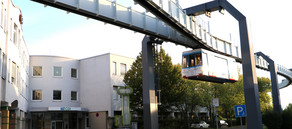Analysing Sweden in PISA (ASIP)
The project examines the representativeness and validity of PISA 2018 in Sweden. For this purpose, ASIP considers on the one hand whether the PISA sample is representative or biased and analyzes on the other hand differences between the PISA tests, national tests and school grades.
Funding
- Riksbankens Jubileumsfond
Project description
The overall aim of ASIP is to determine the trustworthiness of the test scores of the Programme for International Student Assessment (PISA) 2018 in Sweden. To reach that aim, we will investigate whether the PISA sample is biased and determine if students’ test-scores translate into their national test results and grades.

ASIP combines data from PISA with the national assessments as well as register data including grades and applies a novel and strong design which has not been carried out previously. PISA has extensive impact on public discussions and research as well as on policy-makers–but are the results trustworthy? ASIP aims to answer this question.
We combine PISA 2018 data with register data from Sweden. We will conduct a non-response-bias-analyses, bi-factor CFA modeling, and mediation analyses to study the representativeness of PISA in Sweden and measurement properties of the PISA test.
Lead researcher at IFS
External project partners
- Prof. Dr. Stefan Johansson, Dr Linda Boger (Universität Göteborg, Department of Education and Special Education)






![[Translate to English:] [Translate to English:]](/storages/ifs-ep/_processed_/8/5/csm_AdobeStock_412860748_9a2dbb816c.jpeg)
